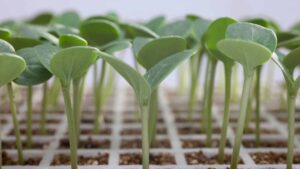
Executive Director
Canadian Seed Institute
Back in November of 2017 I used this space to give some insights on the federal government’s Recognition of Export Grain Analysis by Authorized Laboratories (REGAL) program, which will provide Canadian exporters the option of having their grain shipments to certain countries tested for phytosanitary purposes by authorized private laboratories.
The Canadian Seed Institute is happy to be a part of this program — we’re finalizing an accreditation agreement with the Canadian Food Inspection Agency (CFIA) to provide oversight of the seed labs that will be under contract with CFIA to do phytosanitary testing on grain samples for export to India, China and Mexico.
It’s a good time to prepare ourselves for the year ahead by appreciating how innovative and collaborative the seed sector in Canada is. The REGAL program is a good example of how the seed and grain industries can work together. All kinds of parallels exist in the seed and grain industries. Processes are very similar and the knowledge and expertise needed to be successful in both sectors is very similar.
I’m excited by REGAL. It’s not a big program for CSI — there may be only eight or 10 labs accredited for it — but it’s an important one. Programs like this are becoming more common as time goes on. CFIA-accredited seed labs will benefit from this cost-effective and efficient oversight solution that has been purposely aligned with the oversight of their seed lab accreditation.
Having the industry deliver these kinds of programs helps prepare us to execute the vision that will eventually come out of the Seed Synergy Collaboration Project you’ve read so much about. Developing a next-generation seed regulatory system for the country will involve a reformed, industry-led, government-enabled seed system that effectively attracts investment, fosters innovation, and delivers new and tailored seed traits to customers efficiently. That’s according to the new Seed Synergy green paper released in late 2017, which you will read about in this very issue of Germination and which I had the pleasure of helping craft.
To quote the green paper’s executive summary, “The end result will be a system that delivers more for Canadian seed professionals, and Canadian agriculture in general. More investment in innovation. More choice and tailored products. A clearer regulatory environment that adapts to change. More efficient and effective industry leadership.”
There are ideas in the green paper designed to make the system better across the entire seed system, right from research and development to production, processing marketing/ distribution of varieties, and finally technology. There are lots of opportunities to make some huge improvements to how we do things.
We have lots of ground to cover, and 2018 will be an exciting year for seeing how it all develops. There’s much to come, and I look forward to offering my insight on how the Canadian Seed Institute fits into a much grander vision for the seed sector of the future.











